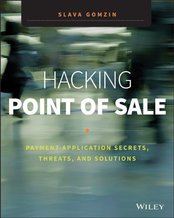Note that the “privileged networks” still exist “behind the scenes” – in order to support all internal application deployments (such as database servers, etc.) and access control infrastructure. In fact, all the BeyondCorp elements in Figure 1 (see below) are located in privileged network, which is still accessed using “old fashion” ways such as remote VPN etc. Only the front end (they call it “access proxy”) is accessible from “unprivileged network”, so there is nothing unique in this model – in fact, it is used by most web applications hosting providers who can say that they are implementing some limited version of BeyondCorp too.
In a typical simplified case, the provider's data center (DC) environment is such a "privileged network", which serves the web applications’ back end and access control infrastructure (see red marks in the picture below). WAF can be used as an “access proxy”. The second authentication factor -- such as SMS, email, or Google Authenticator -- is a replacement for the device certificates utilized by BeyondCorp (which are just another classic example of the second “something you have” authentication factor implementation). The only element that is probably missing is the risk-based authentication, but there is always room for improvement.





 RSS Feed
RSS Feed



